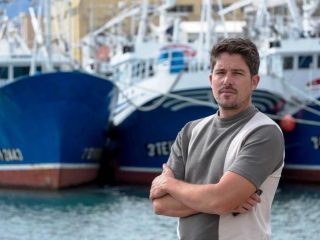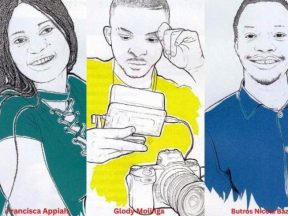In October 2013, the US Justice Department announced the arrest of Ross Ulbricht, the founder and operator of ‘Silk Road,’ a massive online marketplace for drugs and other illicit goods.
Authorities called it ‘the most sophisticated and extensive criminal marketplace on the Internet’ and estimated that it had facilitated the transfer of more than a billion dollars in drugs and other contraband over a two-year period”.
Ulbricht set up his black market bazaar on the dark web - a collection of websites that are accessible only through special software such as TOR. Practically overnight, ‘dark web’ was transformed into a household term, and its implications for criminality, including arms trafficking, became the topic du jour for policymakers, pundits, and journalists. This fascination with the dark web obscures the broader role that the Internet plays in the illicit proliferation of weapons. Online activities related to arms trafficking occur throughout the Internet, including on mainstream websites. This activity ranges from outreach to potential clients on social media to the procurement of weapons, ammunition, and accessories from online vendors.
The embrace of the Internet by arms traffickers and their clients has significant implications for law enforcement and policymakers, but it is not a game changer, at least not yet. Arms trafficking remains tethered to the real (physical) world in important ways. In fact, very few illicit transfers are conducted entirely online. Weapons are physical objects that are manufactured, stored and transported offline. Technological advancements such as 3D printing could eventually sever some of the links between the real and virtual worlds but, for now, most ‘online’ arms trafficking involves extensive offline activities and interactions.
Online activities associated with arms trafficking can be divided into three main categories: advertising, procurement, and technology transfers. A brief discussion of each category is included below. Firearms parts and components seized by the US Homeland Security Investigation. Source: US Immigration and Customs Enforcement (ICE)
Advertising
Perhaps the most important role played by the Internet is efficiently connecting potential buyers and sellers of illicit weapons. Social media sites and online marketplaces allow arms traffickers to identify and engage with potential clients located across town, in other countries, or, in some cases, on different continents. Sites on the dark web are used for this purpose but so are legitimate, mainstream websites.
As documented by Small Arms Survey, traffickers based in the United States have illegally shipped hundreds of weapons, accessories, and components to foreign clients whom they met on social media, legitimate online marketplaces, and gun forums. Such activity is not limited to the United States. Traffickers in Middle East and Africa have set up regional weapons-centred marketplaces on social media sites. Weapons advertised on these marketplaces range from blank-firing handguns to anti-tank missiles. Some companies have taken steps to prevent arms trafficking on their sites, but completely eradicating it is extremely difficult.
Procurement
Some traffickers purchase most or all of their merchandise from online vendors. The ease of shopping online and the ready availability of weapons, components, and accessories undoubtedly explain why traffickers procure these items over the Internet, especially in places where sales of firearms and related items are strictly controlled. Another benefit is reduced visibility. While few online transactions are truly anonymous, purchasing weapons over the Internet allows traffickers to minimize their procurement footprint. Instead of buying large quantities of weapons from a single store — a red flag for law enforcement and law-abiding vendors — many traffickers purchase small quantities of the same items from several different sellers, which is much less conspicuous. Placing numerous small orders online is much easier than driving to multiple brick-and-mortar stores.
An example of a typical social media post offering a weapon (in this case, a Czech Sa vz. 25 sub-machine gun) for sale on the illicit market in Libya. Note: the comments reflect group members’ queries to the original poster regarding the asking price (LYD 1,300) and location (Benghazi) of the weapon.
Online purchases also involve fewer interactions with vendor employees, who are often critical sources of information for law enforcement.
The importance of this information is illustrated by the multi-year investigation into an Arizona-based trafficker of hand grenade components to Mexico.
Employees of military surplus stores frequented by the trafficker provided authorities with a wide array of valuable information, including his purchase orders and driver’s license number.
One quick-witted clerk working at a shop in Phoenix wrote down a description of the trafficker’s vehicle and his license plate number, which was promptly provided to investigators. Two of the clerk’s colleagues also positively identified the trafficker from a photo shown to them by authorities. Based on this and other evidence, the trafficker was arrested in Mexico and extradited to the US.
Many traffickers also use online payment services and cryptocurrencies. Bitcoin and its less well-known counterparts are often favoured by dark web vendors, some of whom only accept payment in cryptocurrencies. Other illicit financial activity, such as the sharing and use of stolen credit card numbers to purchase trafficked firearms, is also conducted online.
Technology transfers
The third category of online activity related to arms trafficking is the illicit sharing of technical data on the creation, assembly and use of weapons. This data takes many forms and covers topics ranging from the construction of improvised batteries for shoulder-fired missiles to the conversion of non-lethal and deactivated guns into lethal-purpose firearms. Of particular concern is the illicit proliferation of files for making weapons with 3D printers and other production technologies, such as computer numerically controlled (CNC) milling machines.
Existing evidence suggests that only a small proportion of illicit weapons are currently made with these technologies, but this may change as 3D printers, and particularly metal printers, improve in quality and decrease in price. Their widespread acquisition and use by traffickers and other illicit end-users could eventually undermine the export control regimes that have been the backbone of national and international anti-trafficking efforts for decades.
Moving forward
Online arms trafficking is a serious problem with real-world consequences. Digital marketplaces and online storefronts are significant force multipliers for tech-savvy arms traffickers, who can build global client bases and diversified supply networks with minimal capital and from nearly anywhere in the world. The Internet is not yet the game-changer that many feared, however. Law enforcement agencies in the US and elsewhere have adapted to the digital age as evidenced by the numerous online arms traffickers arrested by US authorities in recent years, including traffickers operating on the dark web.
The continued links between the virtual and physical worlds provide additional opportunities for authorities to detect online trafficking networks and interdict arms shipments arranged by these networks. That said, the improving quality and increasing availability of 3D-printers and other production technologies could eventually tip the scales in favour of online traffickers, with potentially dire consequences for export control regimes. Preventing this outcome will be challenging; the inherently dual-use nature of 3D printers and their numerous beneficial applications limit the types of controls that governments can impose on manufacturers, retailers and exporters.
Overcoming these and other challenges associated with arms trafficking in the digital age will require creative thinking and close collaboration between policy-makers, law enforcement agencies, and industry at the national and international levels. This is a tall order given the current geopolitical climate but, given what’s at stake, it would behove the international community to find common ground on this critical issue.
Matt Schroeder



